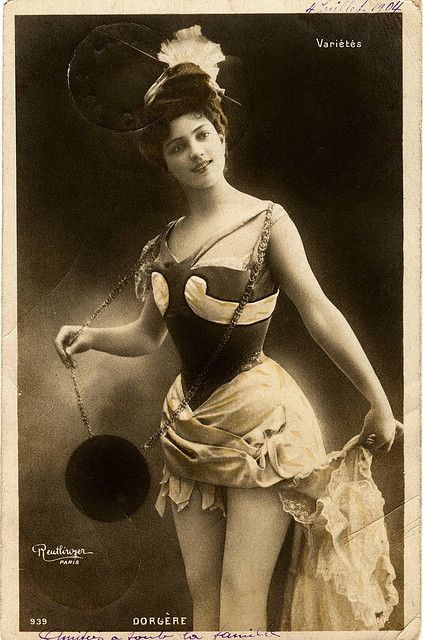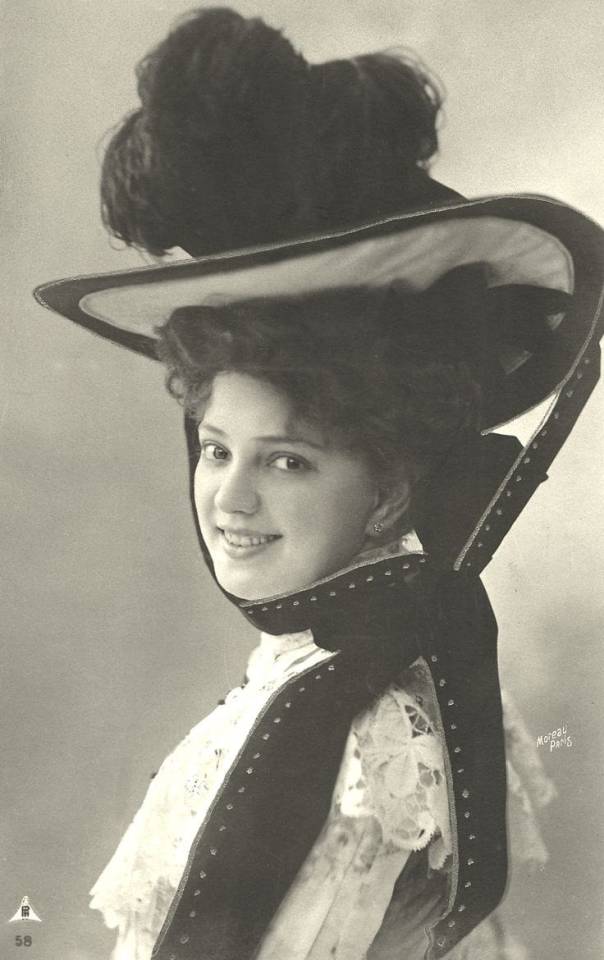#Arlette Dorgere
Photo


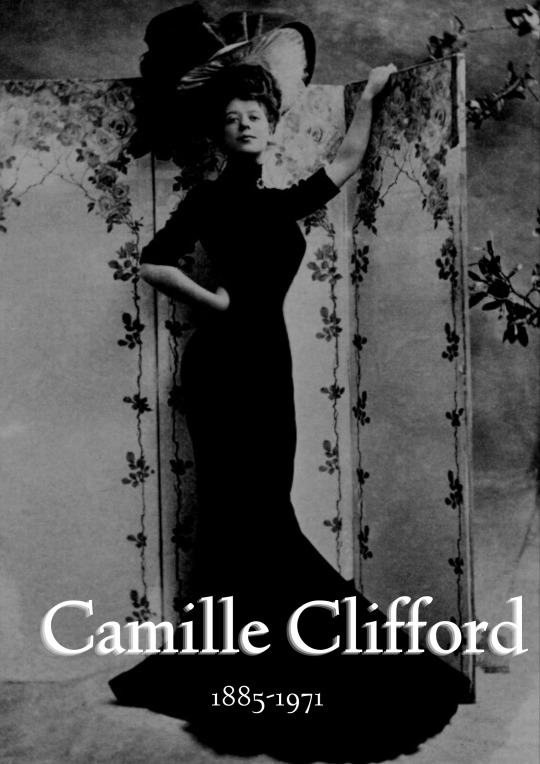
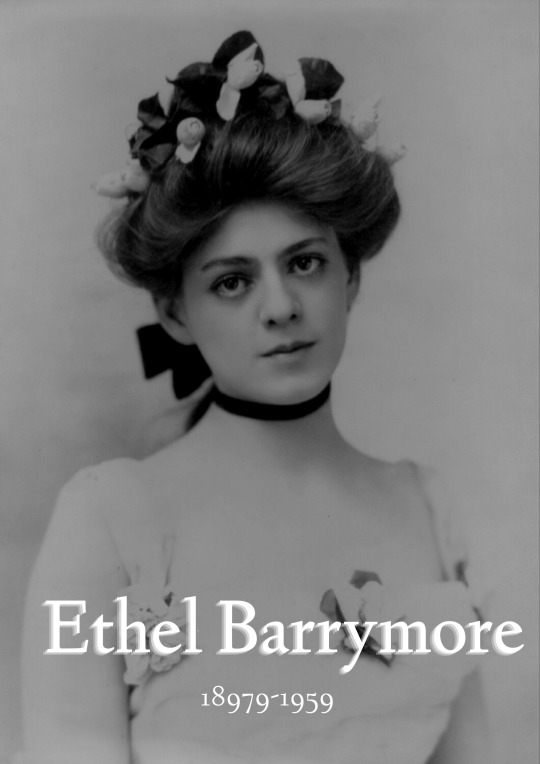
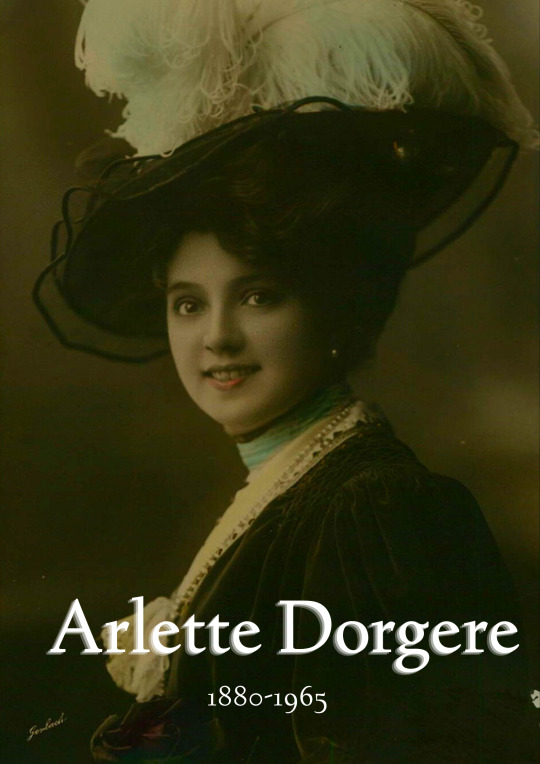



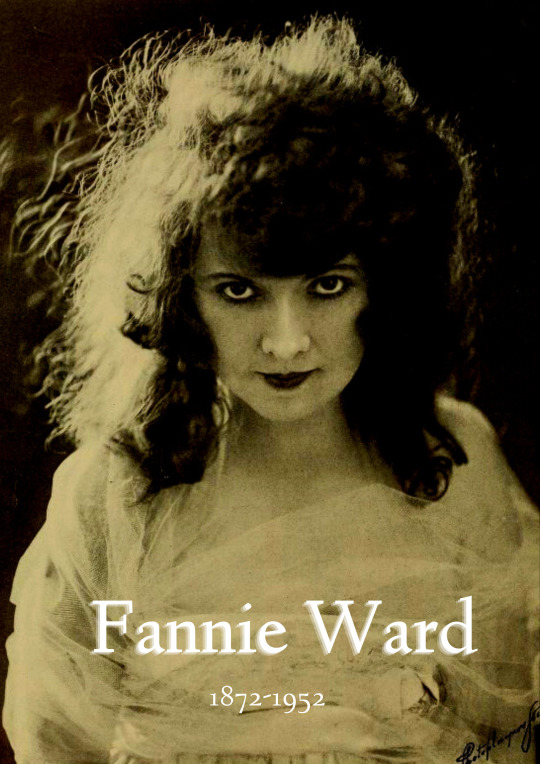
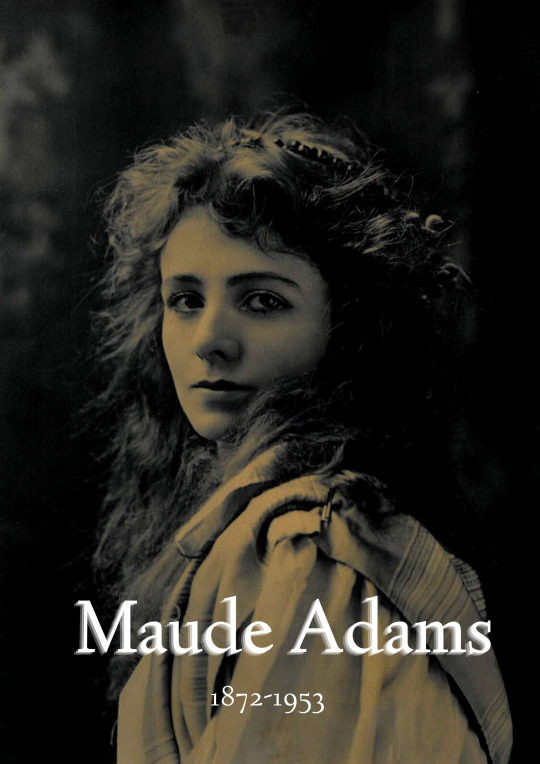
edwardian women ii
#edwardian era#genevieve lantelme#billie burke#camille clifford#ethel barrymore#arlette dorgere#gabrielle ray#lina cavalieri#maud allan#fannie ward#maude adams#photography#vintage#women in history#history
431 notes
·
View notes
Text
Hot Vintage Stage Actress Round 1


Arlette Dorgère: Fernand Nozière in Les Deux Visages (1909 Paris); La Revue des X (1911 Paris); Maurice Hennequin in Les Honneurs de la guerre (1913 Paris)
Stephanie Deste: Salome in Salome (1924 New York); Wanda in Rose-Marie (1926 Sydney); Azuri in The Desert Song (1928 Melbourne);
Propaganda under the cut
Arlette Dorgère:



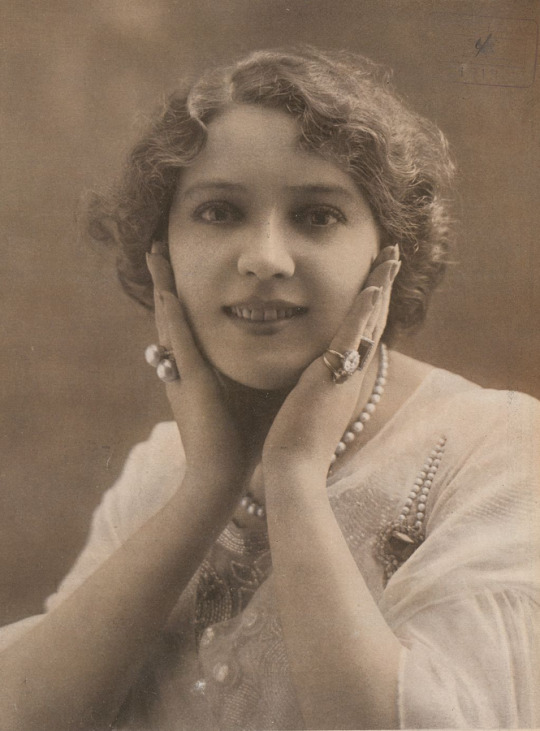



Stephanie Deste:
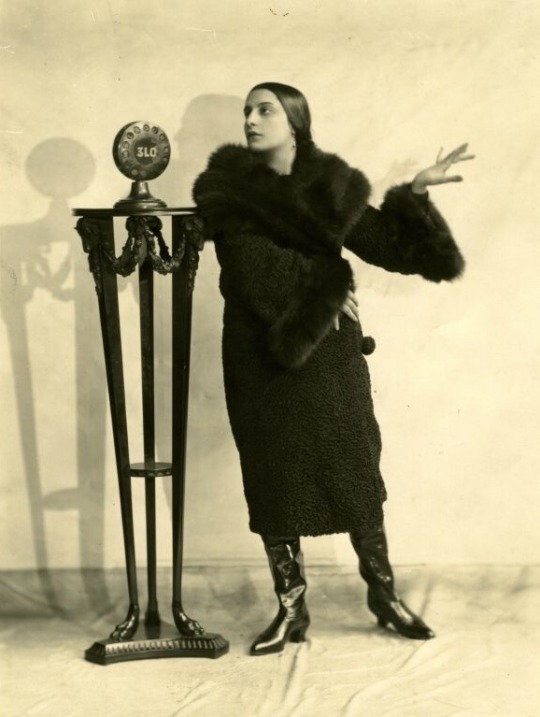


#vintagestagehotties#vintagestagepoll#vintage tournament#vintage poll#arlette dorgère#stephanie deste#arlette dorgere#ladies round 1#vintage ladies
10 notes
·
View notes
Photo


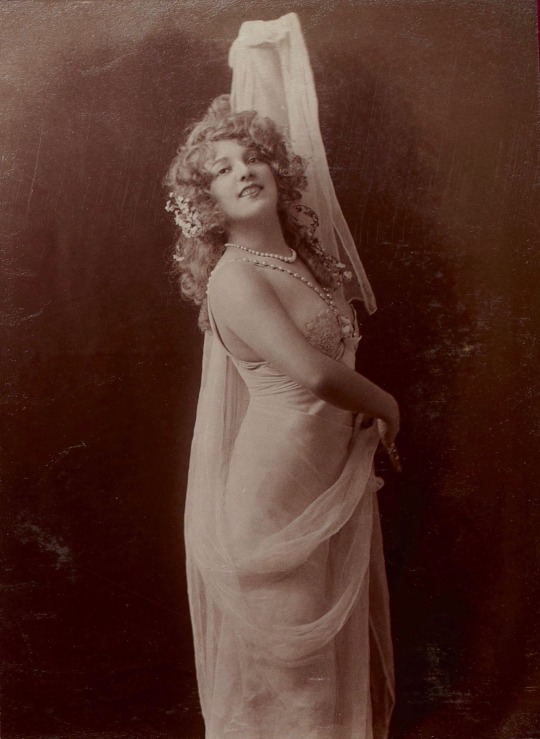
Arlette Dorgère | Reutlinger
58 notes
·
View notes
Photo

Arlette Dorgère
Stage actress, Arlette Dorgere. Born Anna Mathilde Irma Jouve, born June 8, 1880 in Paris, France. She died is 1965. The famous photographer, Leopold Reutlinger took many photographs of her.
16 notes
·
View notes
Photo

Arlette Dorgere in Car Antique French Belle Epoque Photo Postcard by Paul Boyer of Paris, 1900s
31 notes
·
View notes
Photo

Beautiful Edwardian French Stage Actress Arlette Dorgere in Art Nouveau Style Gown by Reutlinger...early 1900s.
70 notes
·
View notes
Video
<strong>Arlette Dorgere Portrait with Hat and beatiful blouse <a href="https://www.flickr.com/photos/22702991@N02/">by Chickeyonthego</a></strong>
#Arlette#Dorgere#Paris#Vintage French Postcards#Edwardian Lady with Hat#photography#theatre#fashion#1900s
5 notes
·
View notes
Text
Directory
A
Adele Exarchopoulos (3)
Alexandra Breckenridge (1)
Alice Eve (6)
Alyson Hannigan (2)
Amber Heard (4)
Amy Adams (15)
Andrea Dromm (2)
Anna Kendrick (10)
Anne Hathaway (1)
Ann-Margret (11)
Arlette Dorgere (1)
Ashley Greene (6)
Audrey Hepburn (3)
Ava Gardner (6)
B
Barbara Babcock (2)
Barbara Stanwyck (1)
Brigitte Bardot (5)
C
Cara Delivigne (1)
Carla Bruni (1)
Carol Lynley (1)
Catherine Deneuve (6)
Catherine Zeta-Jones (5)
Charlize Theron (3)
Chloë Moretz (1)
Christina Applegate (1)
Cindy Crawford (4)
Claudia Cardinale (48)
Claudia Schiffer (2)
Claudine Auger (3)
Colleen Corby (1)
D
Daniela Bianchi (1)
Deborah Ann Woll (1)
Diane Kruger (9)
E
Elena Anaya (2)
Elisha Cuthbert (1)
Ellen Page (1)
Emily Banks (1)
Emily Deschanel (1)
Emma Stone (1)
Emma Watson (8)
Eva Green (2)
Eva Mendes (2)
F
Famke Janssen (8)
Felicia Day (2)
G
Gates McFadden (1)
Gemma Arterton (1)
Gerda Maurus (1)
Gillian Anderson (1)
Gina Torres (1)
Grace Kelly (59)
H
Halle Berry (1)
Hannah Simone (2)
Hayley Atwell (2)
Helena Christensen (1)
I
Isla Fisher (9)
J
Jacqueline Bisset (2)
Jana Kramer (1)
Jane Fonda (25)
Janet Leigh (1)
Jean Shrimpton (1)
Jenna-Louise Coleman (3)
Jennifer Aniston (1)
Jennifer Connelly (1)
Jennifer Morrison (1)
Jessica Alba (2)
Jessica Biel (1)
Jessica Lange (1)
Jessica Lowndes (1)
Jessica Lucas (1)
Jewel Staite (2)
Joan Fontaine (1)
Jodie Foster (1)
Jordana Brewster (8)
Josefina Cisternas (1)
Josefine Preuß (19)
K
Karen Gillan (5)
Karen Steele (1)
Karine Vanasse (2)
Kate Beckinsale (8)
Keira Knightley (5)
Kelli Garner (1)
Kirsten Dunst (1)
Kristen Bell (3)
Kristen Stewart (2)
L
Lara Pulver (1)
Laura Linney (1)
Lauren Bacall (3)
Lea Seydoux (3)
Lena Gercke (2)
Lena Meyer-Landrut (9)
Lorraine Pascale (1)
Louise Monot (2)
M
Maggie Thrett (1)
Majel Barrett (1)
Margot Robbie (1)
Maria von Hartz (1)
Marianna Hill (2)
Marion Michael (1)
Mary Elizabeth Winstead (5)
Maureen O'Sullivan (1)
Megan Gallagher (1)
Michele Hicks (1)
Miko Mayama (1)
Milla Jovovich (1)
Mini Anden (1)
Minka Kelly (1)
Missy Peregrym (1)
Morena Baccarin (9)
N
Nana Visitor (1)
Natalie Portman (8)
Natalie Wood (4)
Natalie Zea (1)
Natasha Yarovenko (1)
Nichelle Nichols (2)
Nicole de Boer (1)
Nicole Kidman (12)
Nina Dobrev (4)
O
Olga Kurylenko (4)
Olivia Munn (1)
P
Pam Bennett (1)
Pam Grier (2)
Pamela Tiffin (1)
Pier Angeli (1)
R
Rachel Bilson (2)
Rachel Hurd Wood (1)
Rachel McAdams (3)
Rachel Nichols (2)
Raquel Torres (1)
Rashida Jones (1)
Reese Witherspoon (4)
Rena Sofer (1)
S
Sally Kellerman (1)
Sarah Carter (2)
Scarlett Johansson (8)
Selma Blair (3)
Sherry Jackson (3)
Shirley Anne Field (1)
Sofia Pernas (1)
Sophie Marceau (2)
Stana Katic (3)
Summer Glau (6)
Susan Denberg (1)
Susan Oliver (2)
Sylvie Vartan (1)
T
Terry Farrell (1)
Tully Jensen (1)
U
unknown (22)
V
Valentina Zelyaeva (1)
Valeria Mazza (1)
Venita Wolf (2)
Viven Leigh (1)
W
Winona Ryder (1)
Y
Yasmeen Ghauri (1)
Z
Zoe Saldana (7)
Zooey Deschanel (2)
7 notes
·
View notes
Link
the relevant information collection
youtube
National Museum Cardiff, Gallery 21
Bedwyr Williams uses multimedia, performance and text to explore the friction between ‘the deadly serious’ and ‘the banal’ aspects of modern life. Williams is known for satirizing the relationship between the artist and curator by creating absurd scenarios for them to appear in. More recently he has explored, through video, themes of dystopia and mankind’s significance in the universe. Williams is shortlisted for the Film London Jarman Award 2015 and represented Wales at the 55th Venice Biennale.
Video, in recent years, has become of particular interest after a decade working with spoken word performance. This new film work mixes media and involves collaboration using humour and bathos to explore issues and subjects including, our insignificance in the universe (The Starry Messenger, 2013) a hoarding dystopian future (ECHT, 2014) and buildings with odd angles (Hotel 70º, 2015).
His most recent work ,Century Egg, 2015, made during a residency with the Museums of Cambridge University, ponders the idea of preserving objects and the moment when ‘things’ become archived ‘things’. It will be presented at the British Art Show in 2015.
Recent and forthcoming solo shows include Whitworth, Manchester, UK; Visual Centre for Contemporary Art, Carlow, IR; g39, Cardiff, UK; Vestjyllands Kunstpavillion, DK (all 2015); Tramway, Glasgow, UK for Glasgow International; Oriel Mostyn, Llandudno,UK (2014); 55th Venice Biennale for Welsh Pavillion,Venice, IT, (2013); IKON, Birmingham, UK (2012); and Kunstverein Salzburger, Salzburg, AT (2011).
https://www.artangel.org.uk/project/break-down/
Artists have been known to destroy their own work and even to kill themselves, but usually it is in a fit of despair or rage. Landy's art is quintessentially modern because it is so ruthlessly efficient, so mechanised. This work took him two years to organise. At first glance the scene inside C&A looks like a factory hard at work making things. Only up close do you see that a process of destruction is taking place which is as complex as the process of creation. – Richard Dorment, The Daily Telegraph, 14 February 2001.
Break Down, Landy's strongest work to date, embodied more than a social commentary on shopping. His gesture of publicly stripping himself of his worldly goods had a spiritual dimension. He behaved as a shaman might, enacting a purge for communal ends. – Judith E. Stein, Art in America, June 2001.
Break Down was a real event, the first Brit Art gesture I have seen that transcended the new-establishment, new-elite, bad-boy banalities of Landy's contemporaries. He's a thinker, and a tough-minded one at that. Is it art? I don't know, but for once, thanks to the carefully reasoned rigour and impersonality of the project, I think so. – Bryan Appleyard, The Sunday Times, 11 March 2001.
youtube
History Of The Poster: A short history of the advertising poster, which reached it's peak in Paris at the Turn of the Century. This unique hand drawn animation was created by Yaneff Design. A simple understanding.
youtube
History Of Poster Design
youtube
Art in Advertising
Research/
One of several posters of Le Chat Noir Cabaret in Paris by Theophile Steinlen (1896). History of Poster Art (c.1860-1980)
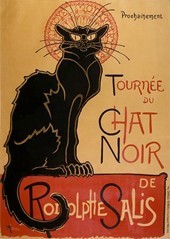
Contents
• Jules Cheret
• France's Belle Epoque
• Art Nouveau
• Paris in the 1900s
• Poster Art in Europe (c.1880-1910)
• The Inter-War Years: Art Deco
• After World War II
• "Art Posters" - Reproductions of Famous Paintings
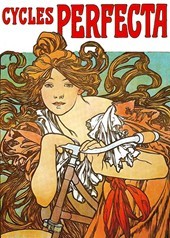
Colour Poster for Perfecta Bicycles
(1902) By Alphonse Mucha.
Jules Cheret
The evolution and development of poster art has always been closely linked to technical advances in printmaking, notably lithography. Thus although the lithographic process was invented by Alois Senefelder (1771-1834) as far back as 1798, it had little impact on posters until the advent of chromolithography later in the 19th century. Even then, it wasn't until Jules Cheret (1836-1932) invented his convenient "three stone lithographic process" in the 1860s - allowing lithographers to produce a wide spectrum of colours from just three stones - that low-cost colour posters at last became a reality.
Known as the "father of the fine art poster", Cheret not only developed a cheaper colour lithographic process, with richer more expressive colours, he also enhanced the aesthetic nature of the poster, endowed it with graceful designs (some influenced by Ukiyo-e woodblock prints from Japan, by artists like Hokusai and the younger Hiroshige) and transformed it into an independent work of art. Furthermore, he encouraged other painters to explore the genre: he later published his special book Maîtres de l'Affiche (Masters of the Poster), to promote the best designers. He also introduced the feminine form into his designs, for extra viewer-appeal. His female subjects became so popular that Parisians dubbed them Cherettes. In total, Cheret produced more than 1,000 posters, beginning with his 1867 advertisement for Sarah Bernardt's performance as Princess Desiree in the comedy La Biche au Bois. Honoured in 1928 with the opening of the Cheret Museum in Nice, Jules Cheret's posters, are some of the most highly sought-after items from the late 19th century.
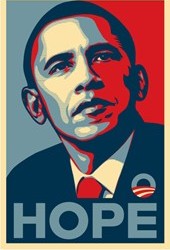
The Barack Obama "Hope Poster"
Designed c.2007 by Shepard Fairey.
France's Belle Epoque
By 1880, Cheret's new poster art form was attracting a number of other top designers such as Theophile Steinlen (1859-1923) responsible for the immortal poster "Cabaret Du Chat Noir", the great Toulouse-Lautrec(1864-1901) creator of numerous theatrical masterpieces, Pierre Bonnard(1867-1947), Edouard Vuillard (1868-1940). Their chosen subject matter featured Parisian night life, notably the theatres, music halls and cabarets of the city. The growing popularity of poster art led to the hosting of a major exhibition in 1884. The poster craze peaked during the decade of the 1890s. Poster artists were transforming Parisian streets into colourful art galleries, attaining cult status in the process, and causing theatre stars to insist on choosing their own favorite artist to do the poster for their show. More poster exhibitions were held, while publishers produced extra copies of the best posters to satisfy collectors. See also: Post-Impressionist Painting (c.1880-1905).
Famous Posters by Toulouse-Lautrec
- Moulin Rouge - La Goulue (1891)
- Ambassadeurs - Aristide Bruant (1892)
- La Reine de Joie (1892)
- Avril (Jane Avril) (1893)
- May Belfort (1895)
- Jane Avril (1899)
Art Nouveau
Interest in the poster was further enhanced in the 1890s by the emergence of Art Nouveau, a decorative style of art marked by flowing, curvilinear shapes, and drawing inspiration from Byzantine icons, Pre-Raphaelite romanticism and the Celtic Art Revival movement. Largely reliant upon form, line and colour, Art Nouveau proved the ideal poster design, and dominated the Parisian poster scene up until the late 1900s. Along the way it attracted a host of artists, including: Alphonse Mucha (1860-1939), Georges de Feure, Eugene Grasset (1845-1917) and Albert Guillaume (1873-1942). One of the first Art Nouveau masterpieces was the 1894 Sarah Bernhardt poster by Alphonse Mucha, the acknowledged master of the style. In 1896, the largest and most significant poster show to date, was held in Reims, with a display of 1,700 posters from all over Europe.
Famous Posters by Alphonse Mucha
- Hippodrome, Leona Dare, 1883
- Arlette Dorgere, 1890
- Moulin Rouge, Paris, Cancan, 1890
- Yvette Guilbert, 1891
- L'Etendard Francais, Bicycles, 1891
- Casino de Paris, Camille Stefani, 1891
- Folies Bergeres, Fleur de Lotus, 1893
- Sarah Bernhardt as Gismonda, 1894
- Vin Mariani, 1894
- Aperitif Mugnier, Dijon, 1894
- Quinquina Dubonnet, 1895
- Bieres de la Meuse, 1897
- Job Cigarette papers, 1898
- Benedictine, 1898
- Moet & Chandon, 1899
Note: the Art Nouveau style had an important influence on the various secession movements in Germany and Austria, including the Munich Secession (1892), the Berlin Secession (1898) and the Vienna Secession(1897).
Paris in the 1900s
Several events led to a decline in the Parisian poster scene during the 1900s. In 1900, Cheret abandoned poster art to concentrate on painting. In 1901, Toulouse Lautrec died. In 1904, Alphonse Mucha left Paris for America and then Czechoslovakia. And from 1905 onwards, Art Nouveau gradually lost its creative edge. Then, into this vacuum stepped a young Italian artist called Leonetto Cappiello (1875-1942), who focused on simplicity and impact. He appreciated the overriding need to create instant visual impact, as exemplified by his 1906 poster designs for Maurin Quina absinthe, and in so doing established a reputation as the father of modern advertising. Meantime, French poster art was further enriched by the arrival in Paris of Sergei Diaghilev(1872-1929) and the Ballets Russes, as well as the colourism and imagery of the revolutionary painting movements known as Fauvism (1905-6), and Cubism (1908-12).
Poster Art in Europe (c.1880-1910)
The poster craze spread rapidly to most of the main cities of Europe. Exhibitions of poster designs were staged in Britain (1894) and Italy (1894), Germany (1896), Switzerland (1896) and Russia (1897), and national styles soon established themselves: Dutch and Swiss posters tended to be neat, precise but restrained; German works were direct but lapsed into medieval gothic romanticism; Italian works were typically bold and melodramatic; while Russian posters were altogether more avant-garde.
Move Away From Art Nouveau
From 1905, there was a European-wide modernist trend to move away from the fussy decoration of Art Nouveau towards a simpler more function style. More and more poster artists switched from curvilinear shapes to rectilinear and geometric imagery, in order to sharpen the advertising message.
British Poster Art
During the mid 1890s most British designers, including Aubrey Beardsley, Will Owne, Dudley Hardy, and Walter Crane, tended to be heavily influenced by French Art Nouveau. Two of the first to free themselves were the "Beggarstaff Brothers" James Pryde and William Nicholson, who focused on far more simple types of design. Other UK post artists, some of whom specialized in producing works for the London Underground rail system, included Austin Cooper, Fred Taylor, Tom Purvis, Pat Keely and the American-born McKnight Kauffer.
Posters in Germany
German poster design was strongly influenced by Ludwig Hohlwein. Good at eliminating all non-essential graphics, he was noted for his use of shadow versus light, as well as his portrayals of people and animals. Other German post artists included Paul Schuerich, H.R.Erdt and the great abstractionist Lucian Bernhard.
It was Bernhard who initiated the German Plakatstil, or Poster Style. This style was characterized by extreme simplicity, represented by clean lines, minimal naturalism, flat colors and precise structure, as exemplified by his Sachplakat Poster (1906) for Preister matches. This Sachplakat (in English, "object poster") was to become a whole new genre of poster advertising.
Austrian Poster Art
One of Austria's best known poster designers was the Vienna-born Joseph Binder, noted for his geometrical, montage-type colour patterns. Others include the Viennese abstract artist Sascha Maurer, whose famous ski-posters also included elements of realism, as well as the Alfred Roller and Koloman Moser.
Swiss Poster Art
Positioned in the centre of Europe and speaking three national languages, Switzerland absorbed a great deal from its neighbours France, Germany and Italy. Leading Swiss Art Nouveau designers included Theophile Steinlen(1859-1923) and Eugene Grasset (1845-1917), both of whom were active at first in France, as well as Mangold, Emil Cardinaux, Baumberger, Stoecklin and Morach. If Italian poster art grew out of opera, Swiss posters depended on the country's status as a skiing destination.
Italian Poster Art
In Italy, posters were initially developed to promote the opera, under the German Art Nouveau artist, Adolfo Hohenstein (1854-1928). Although influenced by the French master Jules Cheret, Hohenstein became known for his luscious colour combinations and dramatic design - often executed in monumental-size works - features which would soon come to characterize the Italian national style. Examples of Hohenstein's posters include his designs for: Tosca by Puccini (1896), and the dramatic Madame Butterfly (1904).
Another leading Italian designer was Hohenstein's top pupil Leopoldo Metlicovitz (1868-1944). He was noted for his allegorical works, as exemplified by his award-winning design for the 1906 International Exposition. Metlicovitz's best pupil was Marcello Dudovich (1878-1962), who - partly under the influence of Franz Laskoff (1869-1918) - streamlined Art Nouveau (known in Italy as Stile Liberty) into a more modern style. Other noteworthy Italian poster artists included: Giovanni Mataloni, Marcello Dudovich, Aleardo Villa, Leopoldo Metlicovitz, Achille Mauzan, and Aleardo Terzi.
Lastly, one should not forget the peerless Leonetto Cappiello (1875-1942) (see above), who was active mainly in Paris and who eventually produced over 1,000 posters during a career spanning 40 years.
American Poster Art
The leading American poster designers were William Bradley and Edward Penfield. Others included, C.E. Millard, F.G. Cooper, C.B. Falls, H.M. Meyers, Harrison Fisher and Adolph Treidler. Edward Penfield, the pioneer of poster art in America, was actually more famous for his illustration and advertising placards for Harper's New Monthly Magazine. Cutting his teeth on ink and watercolour wash illustrations, Penfield went on to produce a large number of high quality fine art poster designs, notable for their abstract style and boldly simplified shapes. Unlike the already established artist Edward Penfield, William H. Bradley - known as the "American Beardsley" - made his reputation from poster design. Famous for producing The Twins (1894), the first American Art Nouveau poster, Bradley's style blended features of the Arts and Crafts Movement, Japanese block printing and Art Nouveau. Another American who contributed significantly to poster art and illustration was Norman Rockwell. Poster art with a social message was later exploited by Ben Shahn and other members of the Social Realism movement (c.1930-45) in America during the Depression era.
Poster Art During the Inter-War Years: Art Deco
After World War I, Art Nouveau was seen as old-fashioned and irrelevant when compared to the new modernist God of Science and the dynamism of the Machine. This new technological reality was better represented by modern art movements such as Cubism, Futurism, Expressionism and others. The first flowering of this new poster style was the Soviet Constructivism movement, inspired by Kasimir Malevich's avant-garde Suprematism movement, and led by Vladimir Tatlin, Alexander Rodchenko, and El Lissitsky. Ironically, it had more influence on Western design, through its impact on the Bauhaus and the De Stijl movement, than on posters in the USSR, which would soon be forced to adapt to Socialist Realism.
In Italy, Marinetti's Futurism seemed to be the dominant style until in the early 1920s, in the hands of Futurists Nicolay Diulgheroff, Lucio Venna and Fortunato Depero, it became too aggressive and was superceded by the quieter and more nostalgic Novecento style. Artists associated with this style included Campigli, Marcello Nizzoli and Mario Sironi, as well as Boccasile, Dudovich, and Riccobaldi.
More important than Constructivism, Futurism or Novecento was a new international style known as Art Deco. Showcased at the "Decorative Arts" Exposition of 1925 in Paris, and exactly in tune with the technological criteria of power and speed, Art Deco was marked by sleek geometrical forms, and strong, even garish, colours. The movement drew inspiration from many sources including Cubism, Futurism, Plakatstil, and even Constructivism. Exponents of Art Deco poster design include the Frenchman Adolphe Mouron Cassandre, noted for his sleek ocean liner posters, the German Ludwig Hohlwein, and the Swiss designers Otto Morach and Herbert Matter.
Art Deco dovetailed perfectly with the Italian love of dynamism and drama. Cappiello and Dudovich were both leading exponents, as was Federico Seneca (1891-1976) and Severo Pozzati (1895-1983). Progress was further stimulated by Fiat and Campari, the country's largest advertisers. Among Fiat's team of poster artists were Riccobaldi, Codognato, Dudovich, Metlicovitz, Sironi, and the great Giorgio De Chirico, while Campari relied on Hohenstein, Mauzan, Sacchetti, Laskoff, Nizzoli, Sinopico, Depero and Munari. Other directions were pursued by the Bauhaus-artist Xanti Schawinsky, and Marcello Nizzoli.
NOTE: During the 1930s and early 40s, the Nazis made full use of poster art in their vicious anti-semitic campaigns, a tactic exemplified by the poster artist Hans Schweitzer (1901-80) (better known as Mjolnir). An infamous example of Schweitzer's Nazi artwas the 1940 poster promoting the anti-Semitic film, "The Eternal Jew".
Swiss Designs
In the years following World War I, Switzerland developed a clear edge in graphic design, based on their mastery of technical and creative principles from Constructivism, the Dutch De Stijl movement led by Theo van Doesburg (1883-1931), and the Bauhaus Design School. An important figure inside the Swiss poster scene was Ernst Keller, who taught at the Zurich Design School where he nurtured the young group of designers who would later invent the world-famous International Typographic Style. Other leading teachers included the artists Jan Tschichold and Theo Ballmer. Other key factors which have contributed to Swiss excellence in this area, include a formidable printing industry and a willingness by the State and Cantonal authorities to invest in the necessary resources.
The Object Poster (Sachplakat)
First introduced by Lucian Bernhard (1906) the Object Poster (Sachplakat) style of minimalism was taken to a new level by Swiss designers. Examples include Otto Baumberger's 1923 textless poster for PKZ, and Peter Birkhauser's 1934 button poster also for PKZ. Meanwhile Swiss poster artists such as Herbert Matter and alter Herdeg demonstrated their advanced techniques in graphic design and photography with a series of Swiss travel posters.
Poster Art After World War II
Demise of the Object Poster
While the Sachplakat was still the No 1 style for Swiss product posters in the 1940s, thanks largely to the efforts of Basel designer-lithographers Stoecklin, Leupin, Birckhauser, and Brun, the 1950s witnessed the replacement of lithographic printing by cheaper offset printing. Other changes were also unavoidable. During the late 1940s and early 1950s, travel posters were increasingly replaced by photographs. Fortunately, Swiss graphic artists were making rapid strides in other areas. In particular, during the following decade, they launched a uniform, minimalist style known as The International Typographic Style because of its dependence on typographic elements, such as layout grids, sans serif typefaces, and black and white photography. Developed at the Basel Design School under Armin Hofmann and Emil Ruder, and at the Zurich Design School under Joseph Muller-Brockmann, all of whom had trained under Keller in Zurich school, the style was ideally suited to the postwar multi-lingual global marketplace, and by the 1970s, it had become the foremost graphic style in the world. However, for commercial reasons explained below, its application in the field of poster art was strictly limited.
Decline in Poster Advertising
After World War II, advertising-posters everywhere declined in importance as the market was effectively taken over by photography, radio and later television. In addition, labour-intensive lithography was also becoming prohibitively expensive, causing advertisers to switch to cheaper but less colourful methods like offset printing and screenprinting. As a result, by the 1960s - despite exceptional campaigns by post artists Bernard Villemot and Raymond Savignac - the poster was no more than a minor genre. Designers who might previously have been attracted to posters were now moving into illustration and other graphic designwork.
Poster Art in the 1960s and 1970s
In Italy, a series of spectacular images were produced for the national film industry, by Alfredo Capitani, Luigi Martinati, Anselmo Ballester and Ercole Brini. Another great Italian poster designer of the 1950s/1960s was Armando Testa.
In addition, there was a sudden surge in Psychedelic rock posters, originated by Wes Wilson. They appeared in the late 1960s, together with other popular music graphics like Milton Glaser's poster for Bob Dylan's 1967 'Greatest Hits' album. Widespread in San Francisco and New York, the music poster movement expanded into marketing and point-of-sale with free album-posters, as well as promotional concert posters. The craze for this sort of graphic artmirrored the demand for vintage posters in Paris during the late 19th century.
Note: an iconic poster dating from the 1968 student riots in Europe, and still popular today, was the silhouette style image of the Marxist revolutionary Che Guevara by the American artist Jim Fitzpatrick.
"Art Posters" - Reproductions of Famous Paintings
If original advertising posters have lost their appeal for commercial companies, the "art poster", replicating a famous work of art like The Mona Lisa, remains a popular item for consumers - especially during recessionary times. Today, it is possible to buy a reproduction of almost any major painting by any important painter from the Italian Renaissance to the Postmodernist era. Online poster publishers typically stock a wide selection of the most popular works.
Designer research: BREWERY LABEL ARTIST/ Sean Dominguez is a surfer and artist, for the past 13 years, he’s been a faithful devotee of The Lost Abbey.At this San Marcos brewery, the 49-year-old artist creates labels with images drawn from Bible stories and the history of Christianity.
http://allaboutbeer.com/lost-abbey-labels/
http://lostabbey.com/people/sean-dominguez/
http://www.thebeercircle.com/lost-abbey-label-artwork/
http://www.pacificsandiego.com/food-drink/beer-breweries/art-beer-label/
0 notes
Photo
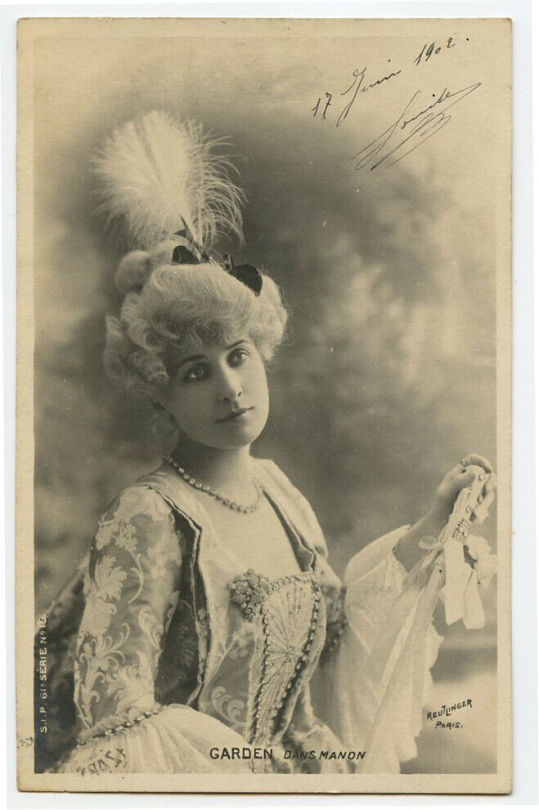


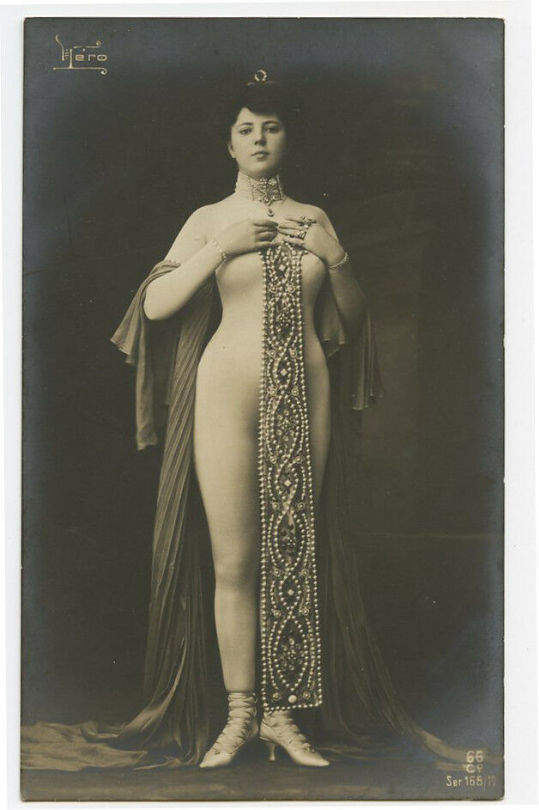

For my birthday I spoiled myself and acquired these lovely vintage postcards. I’ve been meaning to start a collection for quite sometime, so i’m very pleased with the start!
Names and dates are in the captions.
45 notes
·
View notes
